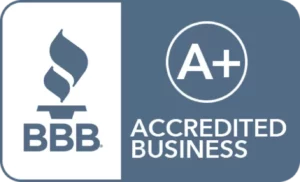Choosing between a Coverdell ESA vs. a 529 plan comes down to a few different factors. Both plans allow you to put aside money in a tax advantageous way to save for education expenses. However, there are different rules that set them apart. These include contribution limits, investment opportunities and age restrictions.
The Coverdell ESA
A Coverdell Education Savings Account, also known simply as a Coverdell ESA, is a trust account established by the government to help families pay for qualified education expenses. A Coverdell ESA can be opened up for anyone who is age 18 or younger, but the assets held in the plan must be withdrawn when the beneficiary has reached the age of 30. If the beneficiary has special needs, these age restrictions may be waived. Funds in the plan can go towards K-12 primary and secondary schools, in addition to higher education. The funds can be used towards many important education expenses, such as books and tuition.
For 2023, you may contribute up to $2,000 for each of your beneficiaries. Again, if you have eligible children, you may contribute up to $2,000 for each child, every year until he or she reach age 18. Further, unlike many other plans, other people may also contribute on your behalf. This may include grandparents and other relatives, friends, businesses and the beneficiary him/herself. However, no matter who contributes, you cannot exceed the annual limit. There are also income restriction for who can contribute to an ESA. You may contribute if your income is less than $110,000 as a single filer or $220,000 for those filing a joint return. In addition, organizations, such as corporations, can help fund the plan.
There are a number of qualified education expenses the plan may be used for. These expenses can be found in detail on IRS Publication 970. Essentially, it covers tuition and fees, books and other supplies, computers and other technological products, tutoring and in some instances, room and board. Lastly, ESA distribution must be less than the total amount of qualified expenses. If you withdraw too much, you will be penalized on the amount over these expenses. The Coverdell ESA also may have minor negative effects on financial aid considerations.
The 529 Plan
A 529 is another type of tax-advantaged plan used to save for educational expenses. In fact, it’s probably the better known of the two plans. The name, taken from the federal tax code, can also be referred to as a Section 529 Plan or a Qualified Tuition Program. Essentially there are two types of 529 Plans: a Savings Plan and a Tuition Plan
Savings Plan
The Savings Plan is the most common type of 529 and most closely resemble the Coverdell ESA. Funds are invested in the plan and grow over time based on the funds chosen. You can either choose a set of investments that never change or opt for a target date fund. A target date fund adjusts investments as one gets closer to college age. The investments become less riskier so that the balance does not shrink.
Withdrawals from the plan can be used for qualified education expenses, both from higher education studies and K-12 students. Expenses include tuition, books and supplies and other services.
Prepaid Tuition Plan
The other option, which is only found under the 529 Plan, is the Prepaid Tuition Plan. This option is not as prevalent as the Savings Plan. The plan works similarly to the other, with one difference. Funds from the Prepaid Tuition Plan can only be used for tuition to college. It cannot be used for any K-12 expenses or any other ancillary higher education expenses.
Essentially, you can lock in current rates to cover tuition, even if the beneficiary is not heading to college yet. Funds will still continue to grow until they are distributed. One last disadvantage of the Tuition Plan is that not all colleges utilize this plan. On the other hand, most eligible institutions will accept a traditional 529 Savings Plan.
Coverdell ESA vs. 529 Plan
Many argue that a 529 Plan is a better option that the Coverdell ESA. There are no contribution limits, other than the total expected cost of schooling, anyone can fund the plan since there are no income restrictions, and they offer similar tax advantages to the ESA. However, there are a few items that make the Coverdell ESA a better option.
First, while both plans cover qualified higher education expenses, there is a difference concerning K-12 expenses. A 529 can only be used for tuition for elementary and secondary expenses. However, only a Coverdell can be used for more than just tuition, including such items as books and supplies, tutoring services and room & board.
The biggest differences and the reason you should establish a Coverdell ESA over (or in addition to) a 529 plan is the investment opportunities. With a 529 plan, there is a set of investments based on the age of the beneficiary. These investments can adapt as you get closer to college, or remain the same. However, with a Coverdell, you have the opportunity to self-direct the plan and invest in almost anything you want. This gives you greater control and the ability to reap greater rewards.
Of course, the Coverdell is not without its disadvantages. The annual limit is still quite low at $2,000. The plan can only be funded until the beneficiary reaches age 18. And lastly, the funds from the plan must be withdrawn fully once he or she reaches age 30. It can be rolled over to certain relatives of the original owner.











